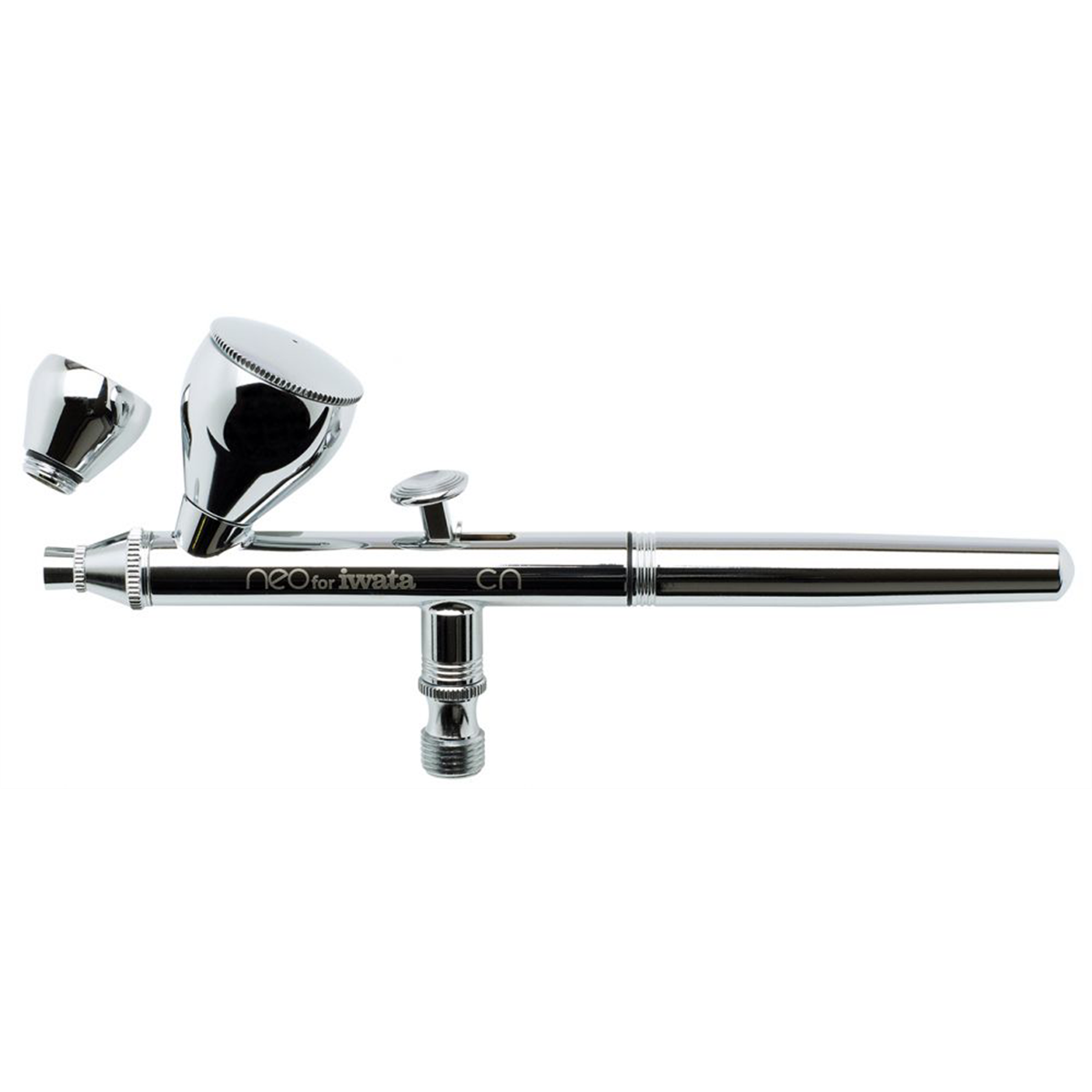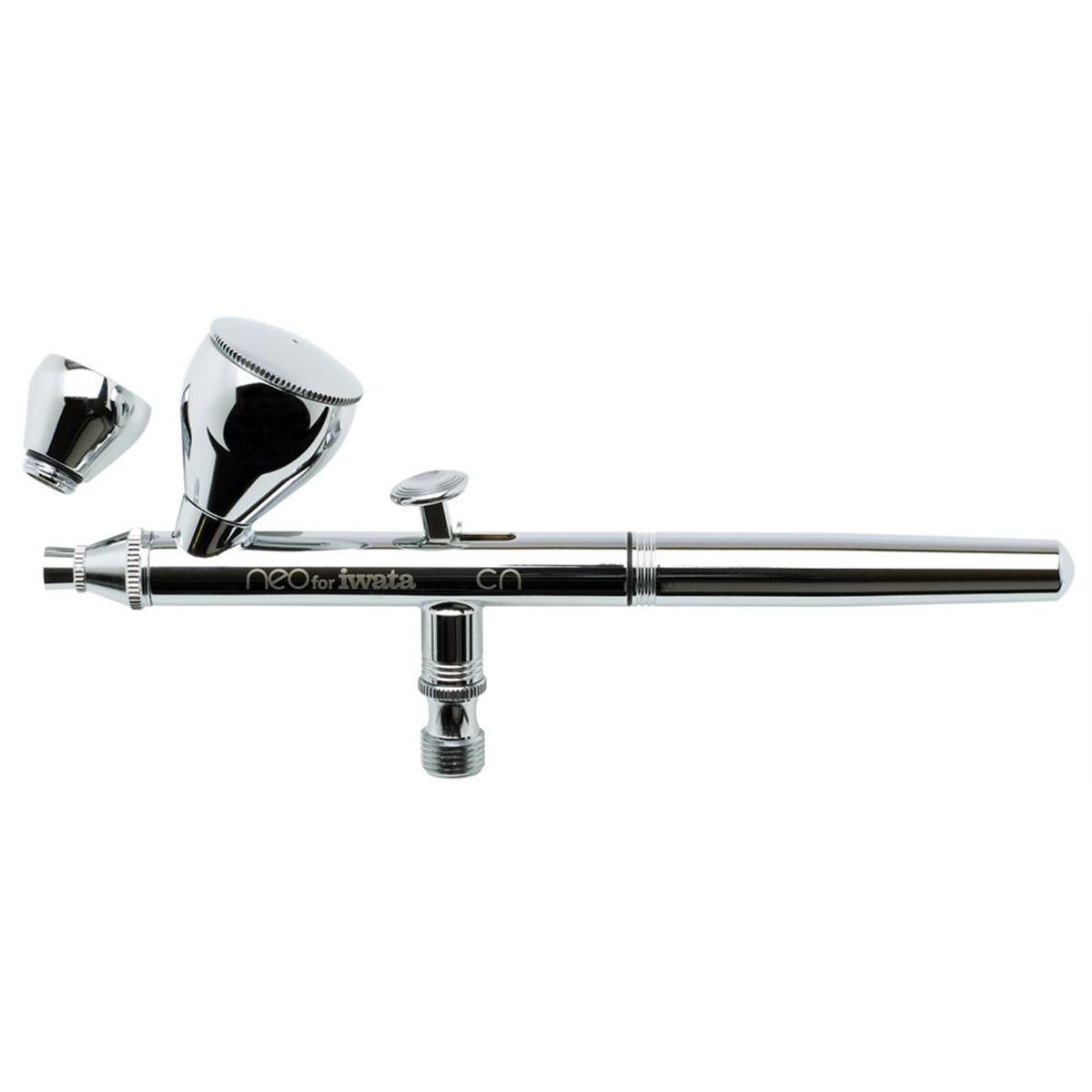Answer
Sep 03, 2024 - 01:16 PM
In the context of the NEO For Iwata Series airbrush, "dual action" refers to the functionality of the airbrush trigger, which allows the user to control both the airflow and the paint flow separately but simultaneously. This dual control feature provides greater precision and versatility when spraying.
Here’s a breakdown of what "dual action" means:
1. Airflow Control (First Action):- When the user presses down on the trigger, it controls the airflow coming from the compressor. Pushing the trigger down increases the airflow, which is essential for atomizing the paint and creating a smooth spray pattern.
- When the user pulls back on the trigger, it controls the amount of paint being released from the nozzle. The further back the trigger is pulled, the more paint is sprayed. This allows the artist to adjust the paint volume from a fine line to a broader stroke.
- Precision and Control: Dual action allows for precise control over the amount of paint and air, which is crucial for detailed work and for achieving a variety of effects, from fine lines to broad strokes.
- Versatility: With the ability to independently control air and paint flow, the user can easily create gradients, soft fades, and other artistic effects.
- Smooth Transitions: The dual-action trigger enables smooth transitions between different paint flow levels, which is ideal for creating shading and subtle details.
- For a delicate line, the user can press down lightly on the trigger for a small amount of airflow and then gently pull back for minimal paint flow. For a thicker line or broader coverage, the user can press down more firmly and pull back further on the trigger to increase both air and paint flow.
In summary, "dual action" in the NEO For Iwata Series airbrush provides the user with greater flexibility and control, making it suitable for a wide range of applications, from fine detail work to more extensive coverage.





Add New Comment